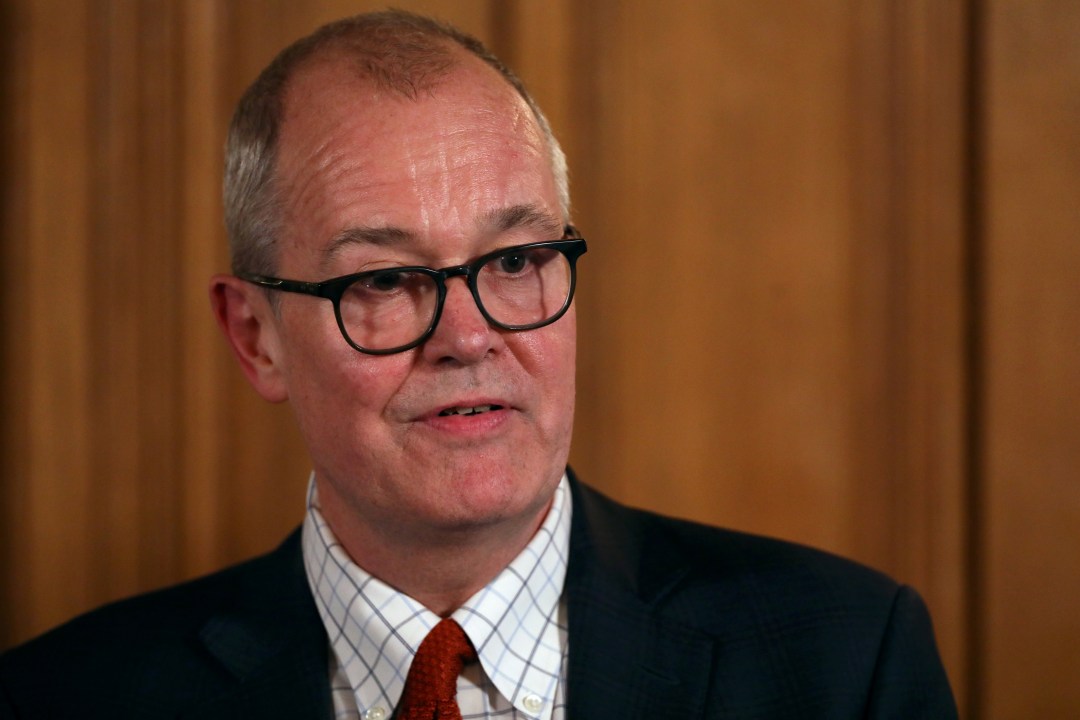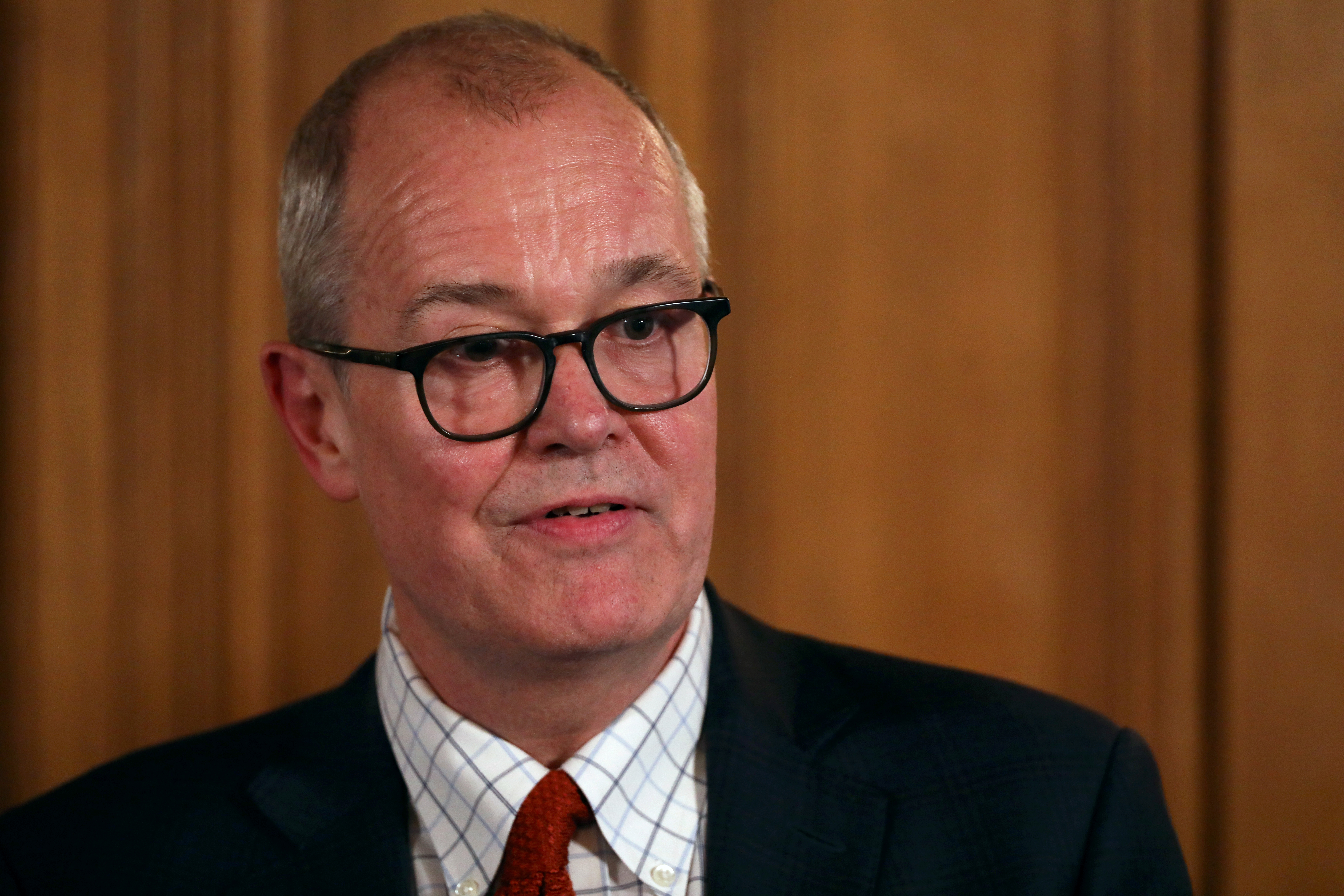This is an edited transcript of the interview with the chief scientific advisor Sir Patrick Vallance on the Today programme this morning.
Justin Webb: We can talk now to Sir Patrick Vallance, who is the government’s chief scientific advisor and is on the line. Good morning to you.
Sir Patrick Vallance: Good morning.
JW: Could we start with sports events, which is what causes a lot of people to raise their eyebrows. And obviously we have the Cheltenham Festival, the big rugby match in Cardiff, 75,000 people tomorrow. What’s your thinking, at the moment, that they should go ahead?
PV: Well, our reasoning is based on which interventions are going to have the biggest effect to reduce the peak of this epidemic, pull it down and broaden it, which is what we’re trying to achieve, and what everybody, I think, agrees is the right course of action. And interventions ones that were announced yesterday will have a major effect. So if everybody with a cough or a persistent cough, a new persistent cough or a fever, or a temperature above 37/8 degrees goes and stays at home for a week, that is a major way to try and reduce the speed of transmission and should reduce the peak by about 20 per cent.
The second measure we talked about was home isolation where the entire household does that if one person gets it. That’s another major measure. And then in terms of protecting the vulnerable, which is absolutely critical because the older and vulnerable population are the ones who stand the biggest chance of getting the serious disease from this, that needs to be done at the time that you’ve got transmission in the country at a level where they are at risk.
So those are the key things. Coming back to gatherings, mass gathering do have some impact. So it’s not they don’t do anything if you stop them, but they are very much more minor than those ones. And the most likely place you’re going to get an infection from is from a family member, a friend, somebody very close in a small space, not in a big space. So it’s sort of eye catching to say stop those but it’s not actually a big effect on the transmission. That’s not to say we wouldn’t do it at some point, but it’s not the most important thing to get in place at the moment.
JW: At the moment then, for instance, at Cardiff, with this 75,000 people coming to the rugby match, is it your view that there will not be transmission between them?
PV: I think it’s more likely that there will be transmission in pubs and other areas where people are aggregating watching it, rather than in the actual stadium itself.
JW: And so would you advise that although that sporting match and others are going ahead, that it’s those things that people should not do?
PV: At the moment, the things that people should do are to stay at home for a week if they’ve got the symptoms.
JW: But not without symptoms?
PV: But without symptoms. There are some practical things. And I heard the point that Jeremy Hunt [the former health secretary and chair of the health select committee] made about care homes. I completely agree. Care homes are a place that we’ve really got to look after and make sure we get right. And that will be something that, as this epidemic grows, becomes an important part of how we need to do it. But the practical thing is if you’re two metres away from somebody, wash hands. Those things really matter, in terms of disease transmission.
JW: Is it your understanding at the moment that people without symptoms are passing it on?
PV: It looks quite likely that there is some degree of asymptomatic transmission. There’s definitely quite a lot of transmission very early on in the disease when there are very mild symptoms.
JW: To your wider thinking, when people say, as they do, serious people, serious scientists, say ‘look at Wuhan. Look at Hong Kong. Look at Singapore. Look at the things that they have done, the very drastic actions that they have taken. And look at the falloff in new incidents of the disease.’ Why should that not be the model for us?
PV: Well, I’ve spoken a lot to the teams in Singapore who are dealing with this. We’ve exchanged ideas and data. And, of course, they went for only selective school closure where they had cases. They didn’t go for mass school closures as their response initially. And many of the measures they took were appropriate for what they have. I think the measures we’ve just taken are actually quite extreme in terms of, if you think about the impact on social distancing and the other measures that may come into play. And one of the things that we need to do is monitor this outbreak very carefully and react in advance of things. And that’s what we’ll do. But not to just go for things because they seem instantly attractive.
JW: But isn’t that the point? That actually, although they might seem instantly attractive, that they are quite short term? And is it your fear? Is it your thinking? Is it your reasoning? Your modelling? that actually some of those actions taken in other places may lead to the Covid-19 coming back more aggressively in the autumn?
PV: That is exactly the risk that you would expect from previous epidemics. That if you suppress something very, very hard when you release those measures, it bounces back and it bounces back at the wrong time. So our aim, and this has been described very well by Tony Fouchi from the US is to try and reduce the peak, broaden the peak, not to suppress it completely. Also, because most people, the vast majority of people, get a mild illness to build up some degree of herd immunity as well so that more people are immune to this disease and we reduce the transmission at the same time. We protect those who are most vulnerable from it. Those are the key things we need to do.
JW: That is fascinating, the herd immunity idea. So in many respects, it would be a good thing, Would it, for the disease to be spread quite widely now rather than later?
PV: What we don’t want is everybody to end up getting it in a short period of time so that we swamp and overwhelm NHS services. So that’s the flattening of the peak. You can’t stop it so that you should end up with a broader peak, during which time you would anticipate that more people will get immunity to this. And that in itself then becomes a protective part of this process. And this is quite likely, I think, to become an annual virus, an annual seasonal infection.
JW: Is it also likely that if you have some herd immunity so a lot of people gain some degree of immunity with a milder strain, then if it does come back on, and one reads all sorts of things about what potentially is happening to the virus. But if it does come back in a mutated and potentially more dangerous form in the future, then they’re protected.
PV: Well, if the virus mutates a lot, then you don’t necessarily get immunity to that variety. But, in general, what you would expect is that in a virus where there’s no particular pressure on it to mutate, to become nastier, the mutations are unlikely to go in that direction and tend to get a bit milder if anything. Because, for the virus, it wants to be more transmissible and less lethal to the person in fact, that’s the sort of survival of the virus.
JW: So that’s really interesting so actually it is a good thing in terms of combating the virus to get that strain of it, that strain that can be coped with for a lot of people rather than to push it away, potentially.
PV: Well, I think that we will end up with a number of people getting it. They will get immunity and that will be helpful for the overall protection of society. And many of the measures we’re talking about are not things that protect you as the individual. So, isolating at home isn’t for you, it’s for everybody else. At the peak, really protecting the elderly and vulnerable is about protecting the individual.
JW: I mean, you are advising the government to do things that other governments aren’t under and you’re expanding very clearly why you’re doing that. Is there a case, have you considered the publication of more of the modelling, more of the evidence of the scientific work that you’re doing behind the scenes?
PV: Yes. I mean, I think a lot of the work that we’re looking at, of course, comes from academics who have their own data and they must publish that as they will. But I’m very keen to make everything we do as transparent as we possibly can. And frankly, this is a collective scientific effort. We need all of the input we can get to get this right. And we should be prepared to change our minds as the evidence changes. We cannot go in with a fixed plan that is immutable.
JW: And on that thought of evidence changing, when it comes to individuals who do fall seriously ill: are we learning, are you learning more about what works in bringing them back to full health and what doesn’t?
PV: It looks like there are two phases to this illness. There is a mild viral phase which lasts for seven days. And for most people, that’s it. And for a small number of people, there’s a second phase which starts after about five days, which seems to be a reaction of the body to the virus. So when they get ill, then we shortness of breath and the other symptoms which progress in that small minority of people, that is not the virus actively doing that. It’s now a reaction of the body to what was the viral infection. We don’t yet have any treatments for any of these stages, but things are being looked at ranging from anti-HIV drugs where there’s some glimmer of evidence they might do something through to much more common medicines that might be used, but we don’t have anything yet and it’s about supportive care, oxygen therapy, ventilation in the most critically ill.
JW: Sir Patrick Vallance, thank you very much for talking to us.







Comments